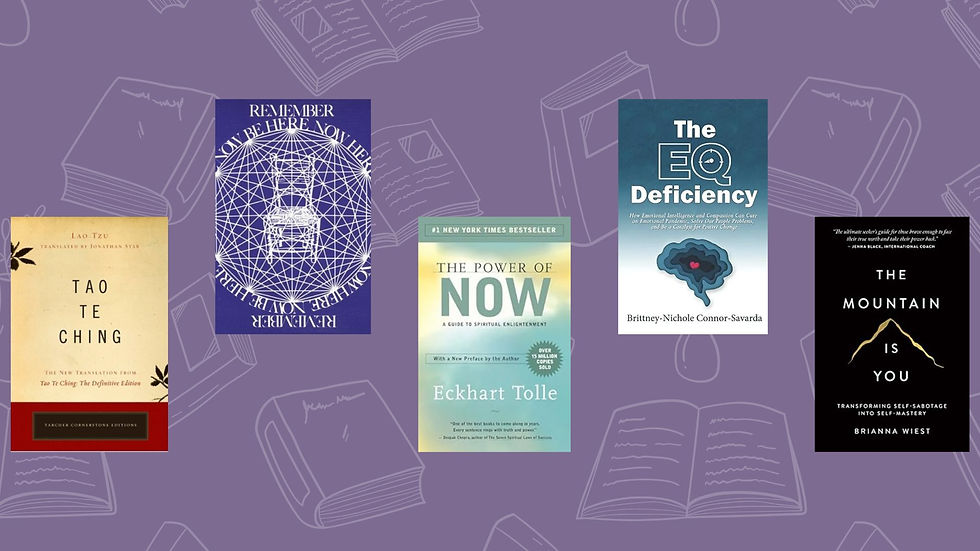How to Release Built-up Emotional Energy
- Brittney-Nichole Connor-Savarda
- Jul 1, 2022
- 3 min read
Updated: Aug 2, 2022

Bottling up our emotions is not only unhealthy; it’s unnatural. Unfortunately, modern society has conditioned us to believe that normal and proper behavior is characterized by a steady and calm demeanor without expressing strong emotions like anger or sadness. And so, as children, we are taught to suppress or deny certain emotions instead of fully expressing or processing them.
Have you ever been in the presence of a young child having an emotional melt-down? Although it is not a pleasant experience, it is a natural release of strong emotions.
If you are a parent and have allowed your child to have an emotional moment without intervening in the process, you may have noticed that once they “get it all out,” your child acts as if nothing ever happened. They may go back to playing, singing, or envelop you in a loving hug. This is because they were allowed to exercise their strong emotions fully.
To be clear, I’m not suggesting that you have an outright emotional melt-down or outburst when feeling strong emotions. Nor am I implying that emotional tantrums are the most effective way for your child to express their intense emotions. However, I am highlighting that as a society, we are condemning and interfering in a very natural and vital process of feeling and expressing our emotions. Society’s lack of acceptance that we are emotional beings and the lack of emotional education on how to effectively identify, understand, and express our emotions are key reasons we are plagued with chronic mental health issues.
Because things like emotions, consciousness, and energy have been considered taboo in Western culture for centuries, we don’t always accept the science associated with them as valid. For instance, the fact that emotions carry energy. Laurence Lee, CEO of The Great Brian Experiment, says, “Every emotion we experience has a specific frequency and vibration. When we experience these emotions repeatedly, they can accumulate in our energy field. This is one reason why it is important to find healthy ways to release emotional energy, as it can become very congested and stagnant in our energy field if we do not.”
If this is a new concept for you, it may seem far-fetched and pseudoscience. Technically, it is pseudoscience because we haven’t yet developed a way to measure it effectively. I think it’s important to acknowledge that just because we currently lack the know-how or tools to measure something doesn’t mean it is inherently invalid, impossible, or doesn’t exist. As humans, we can get into the mindset that we have it all figured out, which is both arrogant and ignorant. Many of the fundamental sciences of today were labeled as hogwash just a century or two ago. The scientists we now revere as geniuses and are household names were once mocked and ridiculed by their peers for their “far-fetched” theories, which have transformed how we live and understand the world today.
Whether you believe emotions carry frequencies or not, we can all agree that they have a very real and noticeable impact on how we think, feel, and react. Emotions like overwhelm, fear, anger, and depression can significantly affect our overall well-being, including the ability to function or focus on day-to-day tasks, mental fog, muscle tension, insomnia, heart disease, fatigue, and more. When emotions go unaddressed and unexercised, they tend to persist in our subconscious mind and send a steady release of stress hormones throughout our body.
How to exercise built-up emotions:
Lee suggests a variety of healthy ways you can release built-up emotions. Here are a few:
Physical activity, like running, going to the gym, dancing, etc.
Creative release, like writing, painting, playing, or listening to music.
Time in nature: nature walks, grounding, time outside
Surrounding yourself with positive people
Meditation or prayer
Lee also stresses that self-harm and harming others (physically or verbally) should never be an avenue for emotional release.
Exercising our emotions is critical for our mental and physical well-being. Once you discover techniques that work for you, practice them as often as needed. Depending on how much emotional energy you have stored or how often you find yourself emotionally triggered, you may need to check in with yourself multiple times a day. Regardless, I would practice an emotional detox (releasing any subconscious thoughts or feelings that aren’t serving you) at least once a day.



Comments